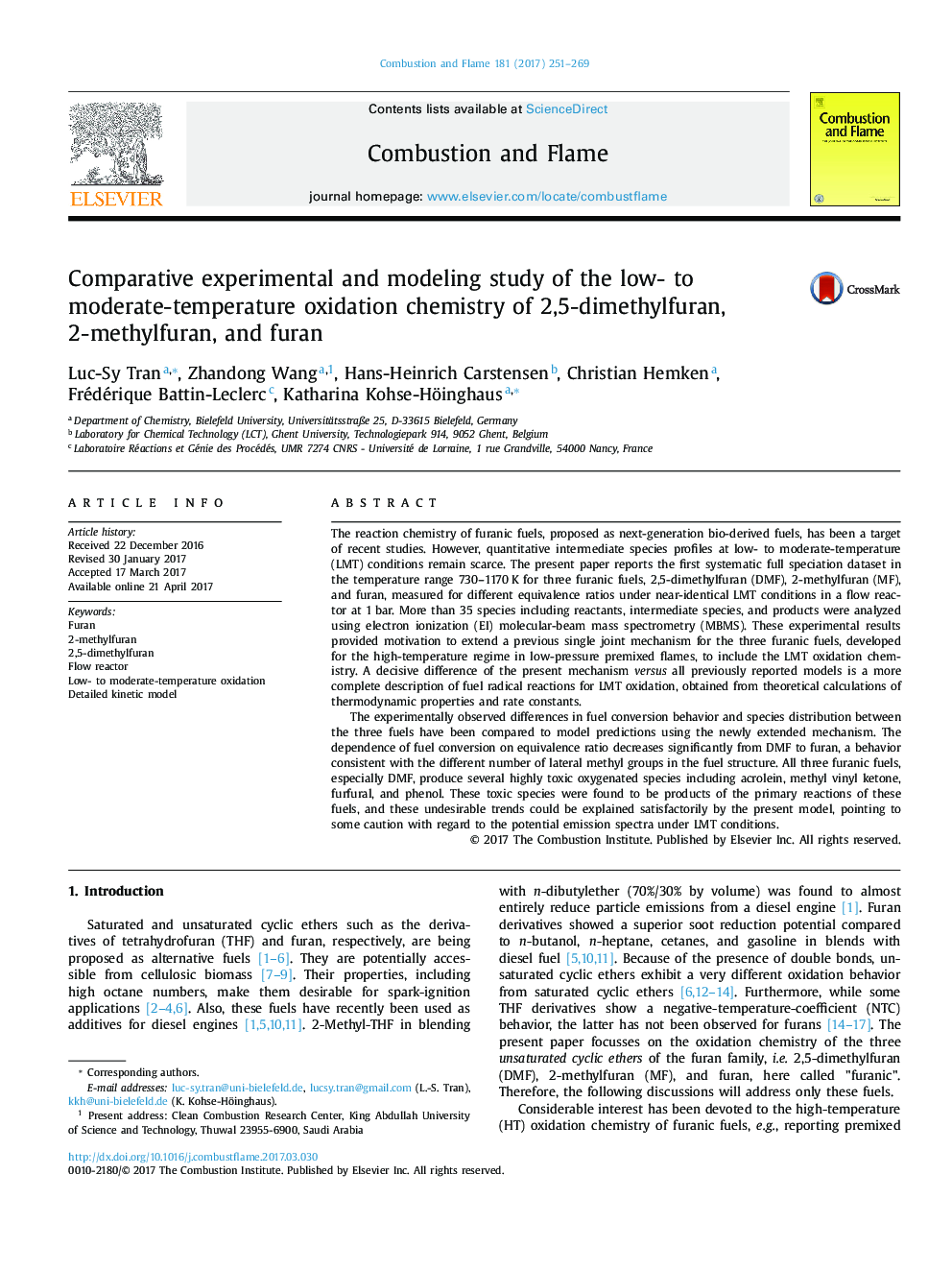| کد مقاله | کد نشریه | سال انتشار | مقاله انگلیسی | نسخه تمام متن |
|---|---|---|---|---|
| 6468219 | 1423556 | 2017 | 19 صفحه PDF | دانلود رایگان |
The reaction chemistry of furanic fuels, proposed as next-generation bio-derived fuels, has been a target of recent studies. However, quantitative intermediate species profiles at low- to moderate-temperature (LMT) conditions remain scarce. The present paper reports the first systematic full speciation dataset in the temperature range 730-1170Â K for three furanic fuels, 2,5-dimethylfuran (DMF), 2-methylfuran (MF), and furan, measured for different equivalence ratios under near-identical LMT conditions in a flow reactor at 1Â bar. More than 35 species including reactants, intermediate species, and products were analyzed using electron ionization (EI) molecular-beam mass spectrometry (MBMS). These experimental results provided motivation to extend a previous single joint mechanism for the three furanic fuels, developed for the high-temperature regime in low-pressure premixed flames, to include the LMT oxidation chemistry. A decisive difference of the present mechanism versus all previously reported models is a more complete description of fuel radical reactions for LMT oxidation, obtained from theoretical calculations of thermodynamic properties and rate constants.The experimentally observed differences in fuel conversion behavior and species distribution between the three fuels have been compared to model predictions using the newly extended mechanism. The dependence of fuel conversion on equivalence ratio decreases significantly from DMF to furan, a behavior consistent with the different number of lateral methyl groups in the fuel structure. All three furanic fuels, especially DMF, produce several highly toxic oxygenated species including acrolein, methyl vinyl ketone, furfural, and phenol. These toxic species were found to be products of the primary reactions of these fuels, and these undesirable trends could be explained satisfactorily by the present model, pointing to some caution with regard to the potential emission spectra under LMT conditions.
Journal: Combustion and Flame - Volume 181, July 2017, Pages 251-269
